
Once upon a time, there was a great and ardent warrior on the battlefield.
But he retired long back and is off the battlefield now.
Best Deals/Flipkart
Despite his physical retirement today, his legacy continues to roar unabated on the battlefield.
He is none other than – “the predecessor and master of modern battle tanks and artillery”.
In simple language he is called – “Catapult”.

Yes, this is true even if it seems fun. Most of us who watch ancient war movies know this stuff.
Today, catapult simply remained as play stuff of children. But if we go back in history, they were used as defense or hunting tools. Going back to further antiquity, there were large catapults used in battle to attack the enemy.
These catapults played a very significant role in the wars of that time. They were the ‘Heroes’ in the battles before the invention of guns and canons, destroying enemy camps from a distance and manipulating the outcome of the war. This is what we see in old war scenes in movies.
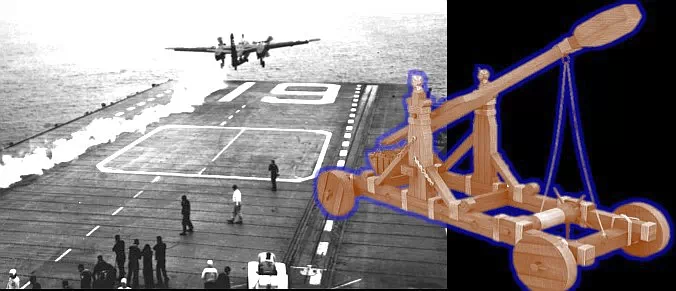
The catapult’s working principle is still used today in advanced artillery launches, as well as the take-off technology used in fighter jets on warships to makes them fly into the sky in a matter of seconds. That’s why I think it is right to compare the catapult to –
“A Great Retired Warrior Who Is Still On The Battlefield…”
Let’s talk about the war catapults now:
The main parts of the ancient catapult used in battle are:
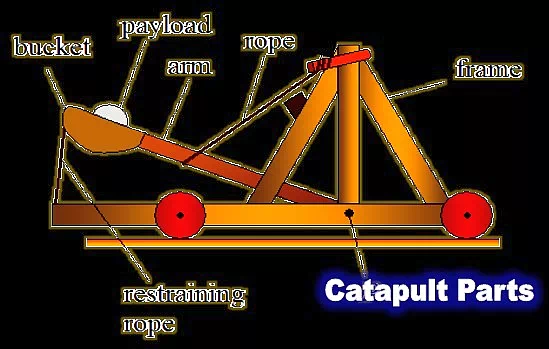
A frame (with or without wheels), long arm, a bucket, a winch, ropes, and a set of cords, a payload.
Basically catapults are classified as the fixed type and the wheeled (movable) type.
Fixed type are usually larger catapults. They were permanently fixed to fortify cities or castles to protect them from the enemy’s attack.
Wheeled (movable) types are comparatively smaller in size and were used in battle to destroy walls of forts and castles. They were also used to fling spears or arrows at the advancing enemies.
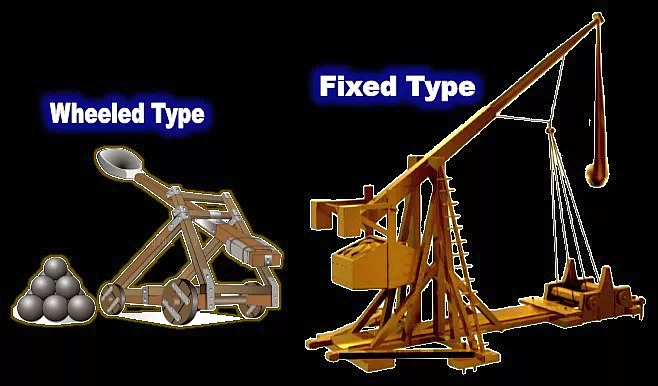
A large catapult was able to throw stones as far as 460 meters (1500 feet).
As per the available records, the use of catapults first appeared around 3200-3400 years ago (around 1200-1000 BCE).
Ancient Romans improved catapults by providing them with wheels.
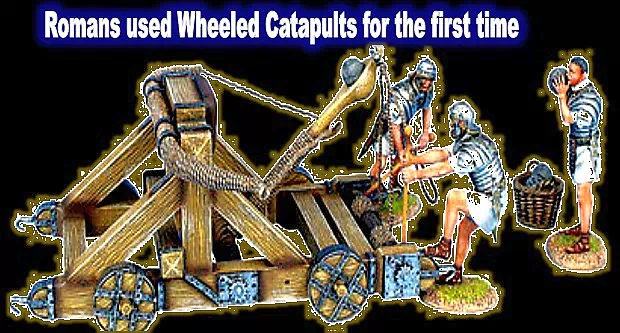
All these catapults are again sub-classified into 4 main types according to their design, working, and purpose.
1. Mangonel:
It is designed to throw projectiles horizontally at lower angles. The Mangonel was best suited for destroying walls of forts or castles.
2. Trebuchet:
They were used to throw heavy stones to far distances at higher angles and best suited to launch projectiles over the walls.
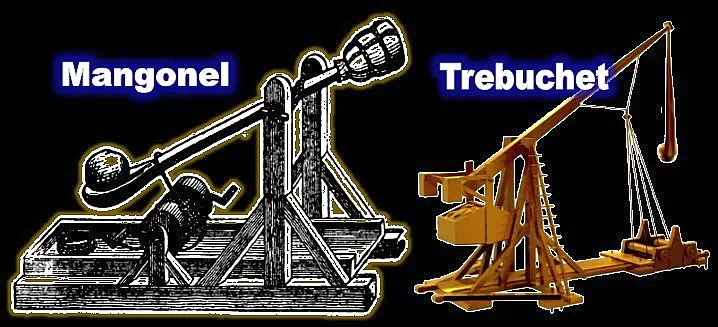
3. Onager:
Its design is a midway between Mangonel and Trebuchet. It was used for greater throwing distances.
4. Ballista:
It is similar to a mangonel but designed like a crossbow (larger in size). It can be said as a torsion-powered mangonel. It was mainly used to throw spears, darts, bolts and sometimes stones with greater force and accuracy.
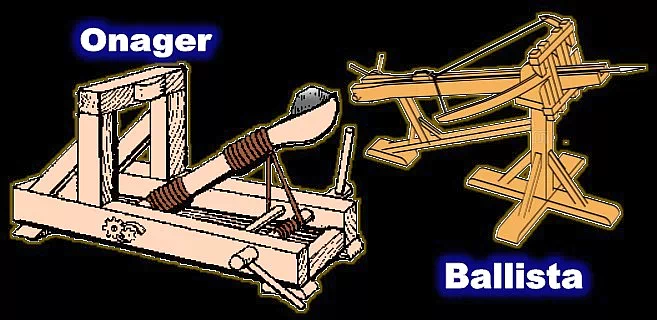
To build or repair catapults carpenters often used to follow the army.
General Working Principle of a catapult used in battle:
(It slightly varies according to the type mentioned above).
- The rope is tightened by winding the winch by the soldiers.
- This twists the cords get tightened at the base of the arm more and more.
- The cup of the arm is loaded with a large stone/rock by the soldiers.
- The cords around the base untwisted at once as the rope is suddenly released.
- That hurls or flings the stone at the target.

Click Here for the Telugu Version of the Post:
All Blogs & Vlogs from mamlabs.net





